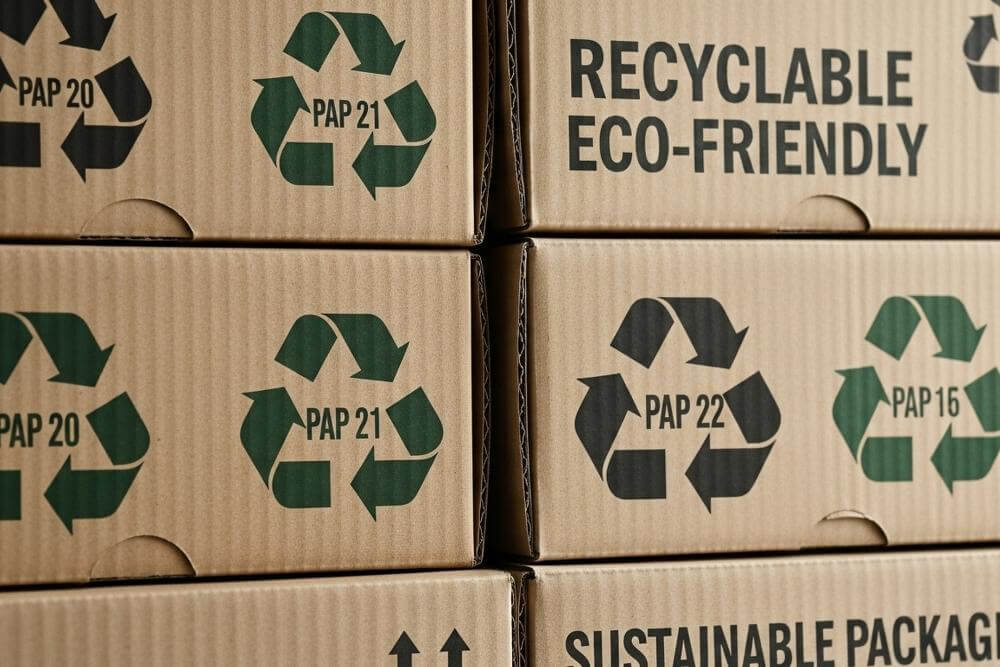
Carbon credits, and their differences, is a frequent topic of discussion with our clients. When developing a sustainability strategy or communicating about sustainability, its essential for businesses to understand these differences, why it matters, and what your business can say about your use of them.
In this article we will delve in to the differences between two very common kinds of carbon credits, and nuances around these credit types.
Carbon credits come in two basic categories, carbon avoidance credits and carbon removals credits. Its really important to understand that there are also two subcategories of carbon removals (ex-ante and ex-post) as these have significant implications of offsetting or net zero claims. Read on for an explainer on these credit types!
Carbon Avoidance (Reduction) Credits:
Carbon avoidance projects essentially reduce or stop and therefore ‘avoid’ greenhouse gas emissions from entering the atmosphere. How they work is by the emissions produced by these projects being lower than they would have been in their absence. The amount of carbon avoidance or reduction is the difference between the baseline emissions (what would have happened without the project) and the actual emissions after the project implementation.
As an illustration:
Installing solar panels, wind turbines, or other renewable energy sources to replace energy generation based on fossil fuels is known as a renewable energy project.
Energy Efficiency Projects: Putting energy-saving devices or methods into use in structures, businesses,
Avoided deforestation: Avoided deforestation (or REDD) are projects that prevent deforestation and preserves trees that would otherwise be cut down, preventing the release of carbon that has been stored.
Impact: By slowing the rate at which emissions enter the atmosphere, carbon avoidance credits support international efforts to limit temperature rise to safe levels.
Carbon Removal Credits
Carbon removal projects actively remove CO2 or other greenhouse gases (GHGs)from the atmosphere and store them in a manner that prevents their re-release for an extended amount of time. The quantification of the carbon sequestration and verification of the tree growth is what produces carbon removal credits.
Illustrations:
Reforestation/afforestation: Often known as ARR or restoration projects, these project types are essentially tree planting. Projects might involve the planting of new forests or reforesting degraded ones. As the tree grows, the volume ofCO2 is sequestered is verified, producing the carbon credit for sale.
Soil Carbon: The term "soil carbon sequestration" refers to agricultural techniques, such as cover crops and no-till farming, that raise the carbon content of soils. These are lauded as being a hugely important tool to fight climate change as the potential of soil carbon sequestration is enormous. However, they can be a more risky credit as it is also possible to lose soil carbon quite easily.
Direct Air Capture (DAC): Methods that immediately extract CO2 from the atmosphere and either subterranean store it or utilise it in durable products.
A combination of biomass energy production and carbon capture and storage technology is known as bioenergy with carbon capture and storage, or BECCS.
Mechanism: GHGs are physically taken out of the atmosphere by these projects.
Ex-ante and ex-post credits – the important differences
Ex-ante and ex-post carbon credits represent different approaches to issuing and verifying carbon credits based on the timing of when the emissions reductions or removals are certified. For the purpose of this article, we will focus on ex-ante and ex-post removals credits, as these are the most common type of credits for UK carbon projects. Understanding these concepts is really important for deciding your credit buying and use strategy!
Ex-ante Carbon Credits
Definition: Ex-ante carbon credits are issued based on the anticipated future emissions reductions or removals that a project is expected to achieve. These credits are essentially an advance payment for the carbon savings that will occur over the project's lifetime.
For UK Woodland Carbon Code projects, these credits are called PIUs (Pending Issuance Units) and they are issued prior to the trees being planted, at the start of the project or early in its implementation, based on projections and estimates of future carbon sequestration or avoidance.
Reliance on Predictions: The issuance relies on models, historical data, and assumptions to estimate the amount of carbon that will be avoided or removed.
Risk and Uncertainty: There is a higher degree of uncertainty since the actual emissions reductions or removals have not yet occurred. The project might underperform or face unforeseen challenges.
Advantages:
Upfront Funding: Provides immediate financial resources to project developers, which can be crucial for initiating and maintaining woodland creation projects.
Encourages Early Action: Motivates early-stage investments in projects by providing an incentive before the benefits are fully realised.
Enables early access and strategic planning: For companies who have a net zero target, and know roughly what their future emissions may be, this provides a great way to support valuable contributions to biodiversity and ecosystem restoration now, and know they will have a carbon credit they can claim against in the future.
Cheaper: Ex-ante credits are often cheaper as they are not claimable and are higher risk.
Disadvantages:
Claims: It is not possible to make a carbon neutrality or net zero claim (until the credits have been converted).
Credibility Concerns: The risk that the projected emissions reductions might not be fully realised can affect the credibility and trust in ex-ante credits.
Verification Complexity: Future monitoring and verification are required to ensure that the anticipated reductions or removals are achieved, which can complicate management.
Ex-post Carbon Credits
Definition: Ex-post carbon credits are issued only after the emissions reductions or removals have been verified and achieved. These credits reflect actual, rather than anticipated, carbon savings.
For UK Woodland Carbon Code projects, these are called WCUs (Woodland Carbon Units) and these credits are issued after the project has demonstrated and verified the actual amount of carbon avoided or removed.
Verification of Results: The issuance is based on measured and verified data, ensuring that the credits correspond to real and achieved reductions or removals. In the case of woodland, this involves a site visits, measuring the trees and calculating the actual carbon sequestration in the woodland.
Lower Uncertainty: Since the credits are based on actual performance, there is less risk and uncertainty compared to ex-ante credits.
Advantages:
Credibility and Reliability: Ex-post credits are generally seen as more credible and reliable because they are based on verified outcomes.
Market Confidence: Buyers of ex-post credits can be more confident that the emissions reductions or removals they are purchasing have genuinely occurred.
Disadvantages:
Delayed Funding: Project developers do not receive financial support until after the reductions or removals have been verified, which can delay the availability of funds needed for project implementation.
Cash Flow Challenges: Projects might face cash flow issues since they need to cover upfront costs before receiving revenues from the sale of credits.
Summary
All credit types play important roles in the carbon market. Avoidance credits often deliver essential funding for carbon reductions in countries and communities where the project would otherwise not have happened. Due to the nature of the projects, such as clean cookstoves, lower emissions transport or energy generation, they often also have really important SDG impacts, such as funding improved health, equality, poverty alleviation and prevention of deforestation.
While removals credits sequester carbon, and often (not always!) positively impact ecosystem functioning, habitat creation and communities. All invaluable attributes in these times.
Ex-ante credits can stimulate early investment and support for projects, while ex-post credits ensure that the carbon credit and related removal of carbon is real and verified, thereby maintaining the integrity and trust of the carbon market.
Project quality is essential though, as there are credit types that, while reducing emissions, can have hugely negative impacts on nature and wildlife. This can be projects such as very large-scale renewables installations in bird migratory routes, or preventing access to ancestral hunting grounds for indigenous communities. Removals project quality is also essential to understand. Ensuring project quality in terms of species choice, diversity of species, biodiversity impacts, chemicals usage, community impacts and risks related to permanence of the project is hugely important, and so proper due diligence should always be carried out.
As part of our due diligence process and to ensure quality, we cover a comprehensive set of quality pillars including community, ecosystem and biodiversity impacts and consultations, project permanence risk, additionality, project reputation and benefits sharing mechanisms.
If you would like to find out more and/or discuss how you can offset your organsiations emissions effectively and credibly, please contact us.

Developing an EPD can ensure you meet tender requirements, as well as providing an opportunity to understand and reduce the true environmental impact of your products.

Understanding the Transition from SECR to UK SRS. The UK government is replacing the current Streamlined Energy and Carbon Reporting (SECR) framework with the more comprehensive UK Sustainability Reporting Standards (UK SRS).

As part of its Net Zero Supplier Roadmap, the NHS has announced that by April 2027, all suppliers, including those providing food, medical products, and services, will be required to submit a comprehensive Carbon Reduction Plan (CRP).

Carbon Sense is your expert partner in carbon reduction. We support UK organisations to understand, measure, and reduce their carbon footprint, save energy, and make sense of sustainability. With a practical, no-nonsense approach, we help you achieve Net Zero goals while protecting your bottom line.

"We are excited to support the awards this year and are honoured to sponsor the Carbon Positive category. At this crucial time, carbon mitigation and an embedded strategy to achieve Net Zero are vital to avoid further climate change catastrophes".

In a world increasingly focused on sustainability, Carbon Literacy has emerged as an essential tool for businesses seeking to reduce their environmental impact. Carbon Sense understands the value and benefits of Carbon Literacy Training whether for a team within your business, or for your entire organisation.

A carbon reduction or decarbonisation plan is a set of strategies and actions that an organisation, community, or government implements to reduce its carbon footprint and mitigate the effects of climate change.

Carbon credits, and their differences, is a frequent topic of discussion. When developing a sustainability strategy or communicating about sustainability, its essential for businesses to understand these differences

Pathway to Net Zero, launched in November 2023 is a fully funded support programme helping businesses adopt more environmentally conscious processes and move towards becoming Net Zero.

The future still remains uncertain so considering options to reduce energy consumption to rely less on the grid is becoming more and more necessary.

Climate change has become a key issue for us all. With scientific reports being released every day, we now know more about the changes that are happening to the Earth’s systems.

The impact of the industrial revolution has created a climate where pretty much all our activities have an impact on the environment.

By reducing your organisation’s carbon footprint you can reduce your impact on the environment and resources.

There is a wealth of research being undertaken by the leading academics studying climate change and assessing how we can build climate resilience and reduce risk.

It is important to get good advice to ensure that you avoid the common pitfalls and have a plan that works for you and achieves genuine environmental benefits.